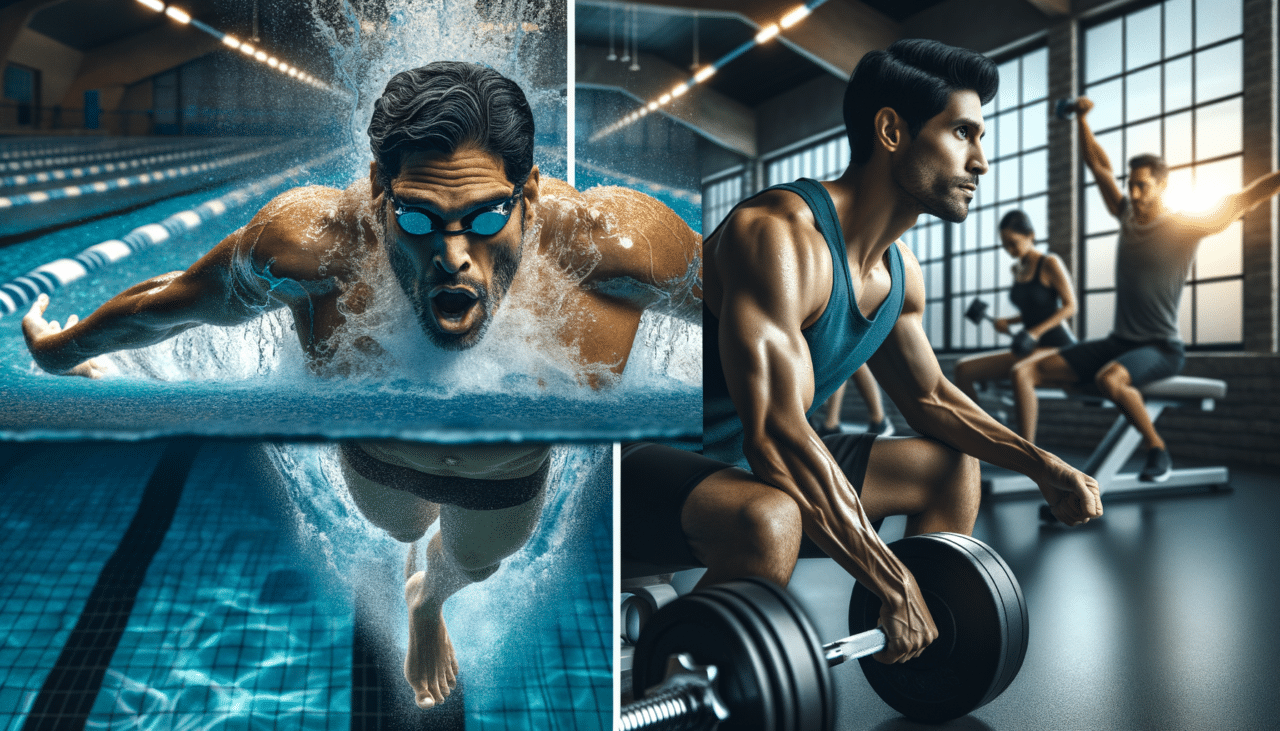Swimming vs. Weightlifting: A Comparative Analysis of Full-Body Workouts
In the heart of Tuscany, where the rolling hills meet the azure skies, I often found myself at the crossroads of tradition and innovation. The Italians have long known the value of a balanced approach to life, where physical activity is not just a practice but an art. In this narrative, we delve into the world of full-body workouts, comparing the fluid grace of swimming with the structured power of weightlifting. Both are revered for their ability to sculpt and strengthen the body, yet they offer distinct experiences and benefits.
The Italian Connection
Before we dive into the comparative analysis, let me share a tale from my days in Florence. There, amidst the historic architecture, I met Alessandro, a local artisan who swore by his morning swims in the Arno River. His routine was not just about fitness; it was a meditation in motion, a dance with nature. Contrast this with Maria, a weightlifting enthusiast I encountered in Rome, whose dedication to lifting was as meticulous as a Michelangelo sculpture. Her strength was not just physical but a testament to discipline and resilience.
Comparative Table: Swimming vs. Weightlifting
| Criteria | Swimming | Weightlifting |
|---|---|---|
| Muscle Engagement | Engages multiple muscle groups simultaneously, providing a comprehensive workout. | Targets specific muscle groups, allowing for focused strength building. |
| Cardiovascular Benefit | Excellent for cardiovascular health, improving heart and lung capacity. | Offers cardiovascular benefits but to a lesser extent unless performed in a circuit. |
| Impact on Joints | Low-impact, ideal for those with joint concerns or injuries. | High-impact, potentially straining joints if not performed with correct form. |
| Calorie Burn | Burns a high amount of calories, aiding in weight loss. | Burns calories but primarily builds muscle mass, which can enhance metabolism over time. |
| Flexibility & Range of Motion | Enhances flexibility and range of motion through dynamic water movements. | Improves flexibility through stretching routines if incorporated into the regimen. |
| Equipment Required | Minimal equipment needed, typically just a swimsuit and goggles. | Requires weights, machines, and possibly a gym membership. |
| Skill Level | Accessible to all skill levels, with variations from beginner to advanced. | Can be adapted for all skill levels, but proper technique is crucial. |
| Mental Benefits | Reduces stress and promotes mental clarity through rhythmic movements. | Boosts confidence and mental toughness through goal achievement. |
Characteristics of Swimming
-
Natural Rhythm: Swimming embodies a natural rhythm, akin to the ebb and flow of the Mediterranean tides. It requires coordination and breath control, offering a full-body workout without the harsh impact on joints.
-
Versatility: From freestyle to butterfly, swimming provides a plethora of strokes, each engaging different muscle groups and offering varied intensity. Whether in a pool or open water, the environment itself adds an element of unpredictability and excitement.
-
Aqua Therapy: The buoyancy of water provides a therapeutic effect, making swimming an excellent choice for rehabilitation and stress relief. It is a sanctuary for those seeking tranquility, much like the serene Italian countryside.
Characteristics of Weightlifting
-
Precision and Power: Weightlifting is a discipline of precision and power. It demands an understanding of one’s body mechanics and the art of progression. Each lift is a calculated movement, akin to the careful brushstrokes of a Renaissance painter.
-
Strength and Sculpting: This practice is unparalleled in its ability to build muscle mass and sculpt the body. It enhances bone density and increases metabolism, providing long-term health benefits.
-
Mental Fortitude: The repetitive nature of lifting weights fosters mental resilience. Setting and achieving lifting goals can significantly boost self-esteem and provide a sense of accomplishment.
Conclusion
In the symphony of fitness, both swimming and weightlifting have their unique chords. Swimming, with its graceful strokes, offers a holistic approach to wellness, embracing the fluidity of movement and the peace of water. Weightlifting, on the other hand, is a testament to human strength and determination, sculpting body and mind with each lift.
As we navigate our personal fitness journeys, we must remember the Italian wisdom of balance—combining the best of both worlds to create a harmonious and fulfilling workout routine. Whether you find solace in the water or strength in the weights, embrace the experience as part of life’s rich tapestry, much like the stories etched into the cobblestones of Italy’s ancient streets.

Comments (0)
There are no comments here yet, you can be the first!